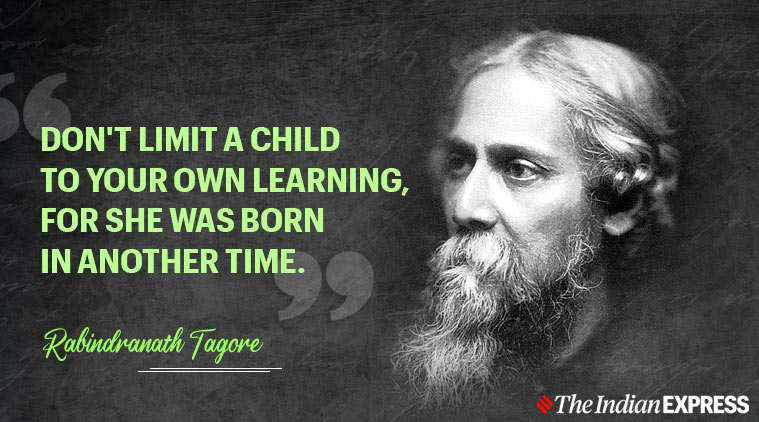BIOGRAPHY OF RABINDRANATH TAGORE
Rabindranath Tagore
BIOGRAPHY
Rabindranath Tagore (1861-1941) was the most youthful child of Debendranath Tagore, a head of the Brahmo Samaj, which was another strict faction in nineteenth-century Bengal and which endeavored a recovery of a definitive monistic premise of Hinduism as set down in the Upanishads. He was instructed at home; and despite the fact that at seventeen he was shipped off England for formal tutoring, he didn't complete his studies there. In his experienced years, notwithstanding his diserse artistic exercises, he dealt with the family homes, a venture which carried him into close touch with normal humankind and expanded his advantage in friendly changes. He additionally began a test school at Shantiniketan where he attempted his Upanishadic standards of training. Every now and then he took an interest in the Indian patriot development, however in his own non-nostalgic and visionary way; and Gandhi, the political dad of present day India, was his dedicated companion. Tagore was knighted by the decision British Government in 1915, however inside a couple of years he surrendered the distinction as a dissent against British approaches in India.
Tagore had early accomplishment as an essayist in his local Bengal. With his interpretations of a portion of his sonnets he turned out to be quickly known in the West. Truth be told his acclaim accomplished a brilliant stature, taking him across landmasses on address visits and voyages through kinship. For the world he turned into the voice of India's profound legacy; and for India, particularly for Bengal, he turned into an extraordinary living foundation.
In spite of the fact that Tagore composed effectively in every artistic kind, he was as a matter of first importance an artist. Among his fifty and odd volumes of verse are Manasi (1890) [The Ideal One], Sonar Tari (1894) [The Golden Boat], Gitanjali (1910) [Song Offerings], Gitimalya (1914) [Wreath of Songs], and Balaka (1916) [The Flight of Cranes]. The English renderings of his verse, which incorporate The Gardener (1913), Fruit-Gathering (1916), and The Fugitive (1921), don't by and large compare to specific volumes in the first Bengali; and despite its title, Gitanjali: Song Offerings (1912), the most acclaimed of them, contains sonnets from different works other than its namesake. Tagore's significant plays are Raja (1910) [The King of the Dark Chamber], Dakghar (1912) [The Post Office], Achalayatan (1912) [The Immovable], Muktadhara (1922) [The Waterfall], and Raktakaravi (1926) [Red Oleanders]. He is the creator of a few volumes of brief tales and various books, among them Gora (1910), Ghare-Baire (1916) [The Home and the World], and Yogayog (1929) [Crosscurrents]. Other than these, he composed melodic dramatizations, dance shows, expositions, all things considered, travel journals, and two collections of memoirs, one in his center years and the other presently before his demise in 1941. Tagore likewise left various drawings and canvases, and tunes for which he composed the music himself.



Comments
Post a Comment